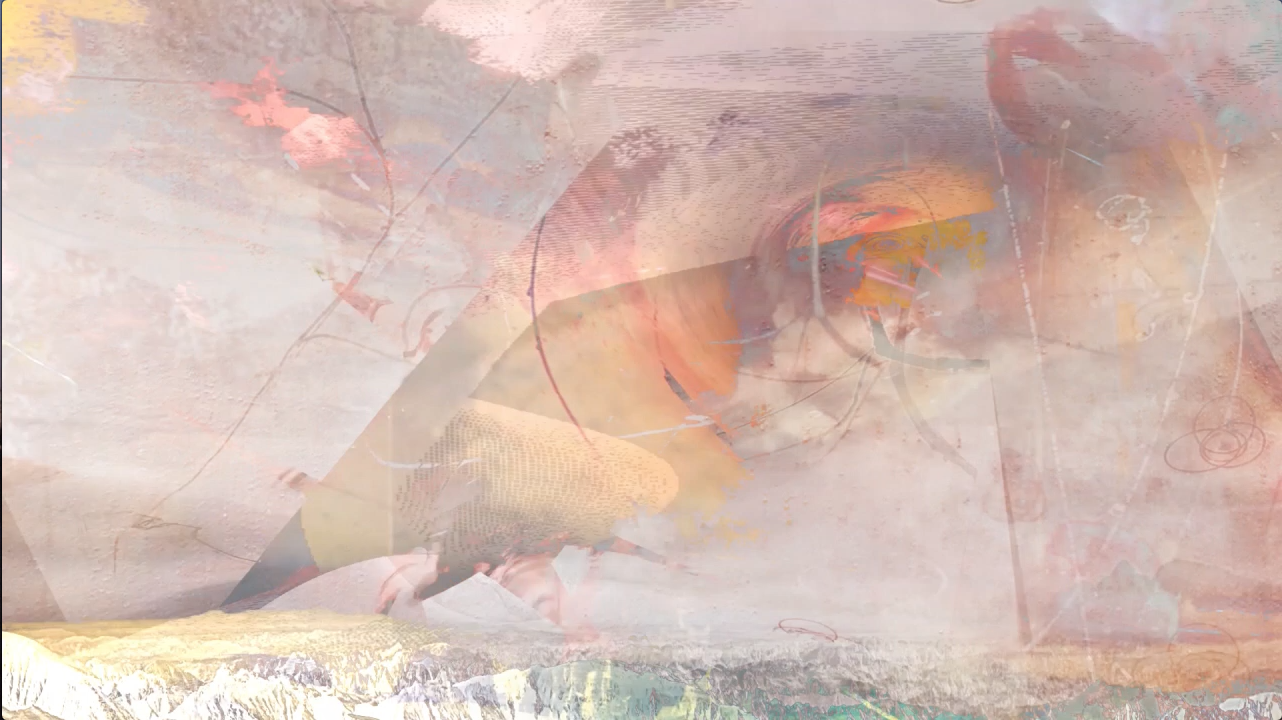In June of 2017, the National Radio Astronomy Observatory invited four artists to a conference at New Mexico Institute of Mining and Technology to interpret, for the public through their art, the four science cases that would drive the design of the next generation very large array telescope (ngVLA). One artist, Eddie Edwards, spent some time talking with the group of scientists, who wrote some of the galaxy ecosystem science cases, and developed an interpretative video about what the ngvla might observe in radio wavelengths in 2034, when it’s estimated to be operational. We asked her a few questions about how she was able to develop her video collage, given the complex science and math concepts involved in radio astronomy. Here’s what she said:
1. The concept of an ecosystem provides insight into how we might understand galaxy formation. How are you deciphering the meaning of a galaxy ecosystem the ngvla science team came up with?
The piece is not so much about the process or sequence of events, even though star formation and the cycle of regeneration are part of it, as it is about the ever-present activity of forces within the ecosystem – a grand ballet of magnetic fields, gases, pulsars, black holes and gravity fields that are not directly visible to us and are only understood through the interpretation of the energy they emit.
The animated interpretation of these elements will intertwine and evolve to create an experience, as opposed to a story; one artist’s interpretation of what we might see if any of these events were visible. This is not a strict representation, but more of a process of asking questions. Imagine that I am creating an abstract painting, but because I can use animation, it’s a painting that happens over a period of time. In a way, it tells a story, but it’s more of an experience.
And a sidebar here: this is an artistic process, so as I’ve been creating, the piece has morphed — I’m not sure how to explain this — I guess it’s like composing music or probably creative writing! You might start out with one thing in mind, but that just becomes the foundation for something more.
2. Stars form from the collapse of molecular gas clouds under the effect of gravity. Is this what you’re trying to depict in some of your images?
Yes, all of these events are the inspiration for the illustrations, but the animations are artistic conceptual depictions of these cosmic energy events. My role as an artist in this context is to absorb concepts and interpret them. So to answer your question, the installation piece is more about creating an environment in which the audience can experience (vs. explain) events. I’m presenting an interpretation of things we can’t see.
3. Can you describe what it is like to include sound and paint in order to describe an invisible phenomenon?
I am a curious, abstract, conceptual artist using mixed media and technology to explore complex subjects, so this was an excellent challenge for me. The Galaxy Ecosystem installation is created with experimental explorations with acrylic paint, collage and digital manipulation, digital animation, large screen projection and an ambient soundscape to enrich the experience.
When I was working on the original work for the ngVLA illustrations – I was feeling that the static nature of illustration is an inadequate way to understand or experience or interpret these concepts. Adding sound and animation enriches how I can express the abstract nature of something we can’t directly experience.
About the Galaxy Ecosystem Installation:
The Currents New Media Festival started in Santa Fe in 2010 and is now an annual event with participants from around the world. “New Media” describes works of fine art that are primarily technology driven. The exhibit opened on June 8 and runs through June 24, 2018. Advancing this effort to visualize the invisible, Edwards with the support of NRAO, has expanded the dimensions of her original exploratory illustration for ngVLA to include sight, sound, and motion allowing viewers to imagine what we might experience if we could hear and see this awesome theater of space.
In this installation, the work comes to life in an orchestrated interplay of the elements depicting the complex and conceptual invisible energy events of space. These animated images are projected onto a large translucent, free-hanging theater scrim which undulates in a smooth, natural wavelike motion referencing the endless ever-changing activity of the galaxy. A monochrome desert landscape is a backdrop for a twittering, roiling complex ballet of unseen activity. Magnetic fields, gases, pulsars, black holes, gravity fields, intertwine to create a story of the cycle of the galaxy drama. This story plays out in a series of playful, colorful and wondrous abstractions. The “story” is punctuated by striking interactions and quiet contemplations. This interplay of moving elements is set to an aesthetic soundscape designed to help the listener contemplate the mystery and meaning of the images without distraction. The soundscape combines interpretative sounds and musical textures both familiar and strange, as if from the unknown. Like the animation, strangely beautiful and curious.






